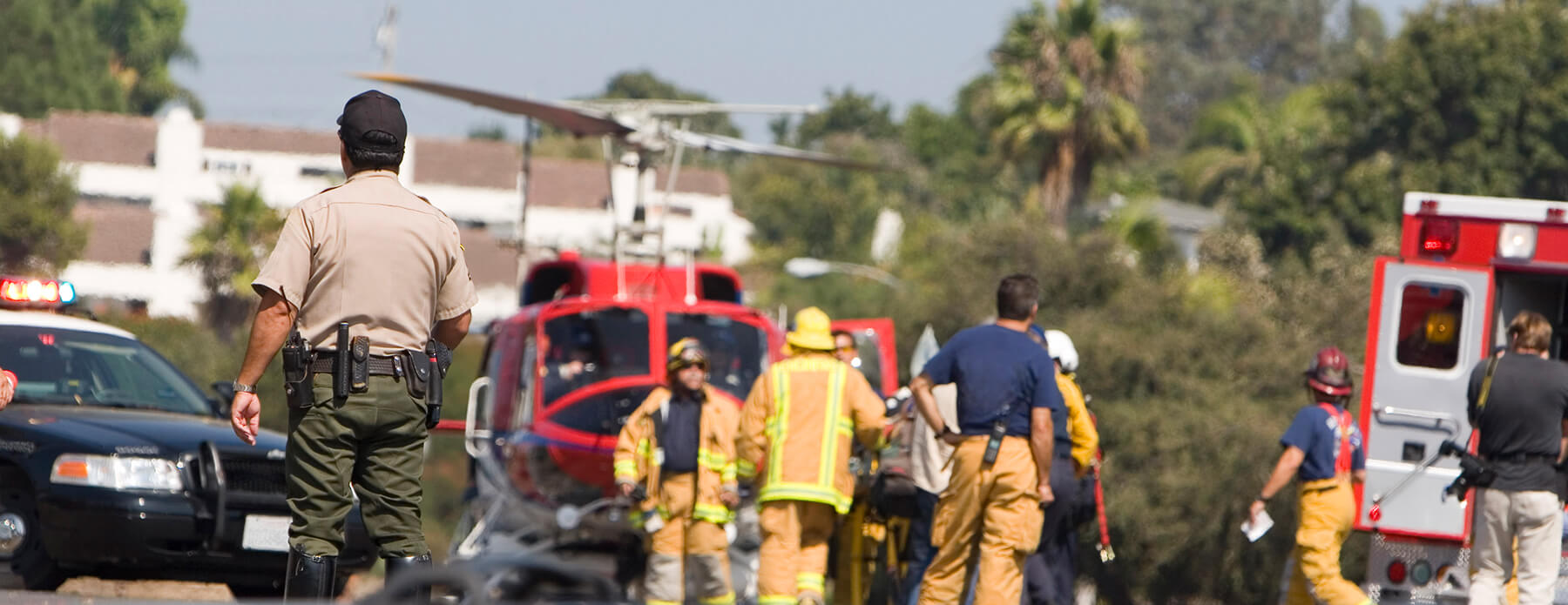Tidal Basin’s experts Bill Slater, Allen Davis, Stephanie Murphy, Ashlee Delventhal, and Kristopher Prickett sit down to answer questions concerning COVID-19 (Coronavirus). Topics include the FEMA reimbursement process, rules that will apply to state and non-state entities, as well as answers for local Government and other eligible entities, hospitals, airports, and schools.
What you need to know about the FEMA reimbursement process in response to COVID-19
The Federal Emergency Management Agency (FEMA) is providing financial assistance to states, territories, local governments, certain private nonprofits, institutions of higher education, and other non-federal entities due to the response to the COVID-19 pandemic outbreak in the U.S. There is a significant amount of documentation of costs and numerous tasks to complete to ensure reimbursement under these federal grant programs.
In addition, FEMA requires all grant programs meet the federal procurement standards found at 2 C.F.R. §§ 200.317 – 200.326. To assist Tidal Basin clients and other stakeholders who are involved in or impacted by the COVID-19 response, Tidal Basin experts in disaster preparedness, mitigation, and recovery have answered the following frequently asked questions (FAQs) related to these unique and unprecedented circumstances.
What date does FEMA acknowledge for reimbursement purposes related to the President’s disaster declaration for COVID-19?
On March 13, 2020, the President issued a nationwide emergency declaration (including all states, territories and protectorates) related to the COVID-19 Pandemic with an incident period of January 20, 2020 and continuing. Starting from January 20, local governments, tribal governments, and certain private nonprofit organizations are eligible for reimbursement of costs related to their preparations for, response to, and recovery from COVID-19 (subject to the relevant cost share).
Who is eligible to issue noncompetitive procurements or contracts due to the public health emergency for COVID-19?
States, U.S. territories, and non-state entities including local governments, private and public hospitals, institutions of higher learning, airports, and certain private nonprofit organizations may issue noncompetitive emergency contracts for exigent circumstances.
Importantly, because the exception to competitive procurement is available only while the exigent or emergency circumstances exist, entities should, upon awarding a noncompetitive contract, immediately begin the process of competitively procuring similar goods and services in order to transition to the competitively procured contracts as soon as the exigent or emergency circumstances cease to exist. (Source: FEMA COVID-19 FAQ)
What rules apply to state entities?
According to FEMA, states are required to follow their own procurement procedures or comply with the federal requirements for procurement, whichever is more restrictive. They must also include in their contracts certain provisions required by 2 C.F.R. §§ 200.317, 200.322, and 200.326.
What rules apply to non-state entities?
According to FEMA, for non-state entities, federal regulations (2 C.F.R. Part 200 – Uniform Administrative Requirements, Cost Principles, and Audit Requirements for Federal Awards) establish requirements for the exigency or emergency exception that permits the use of noncompetitive procurements, frequently referred to as “sole-source contracting.” In general, it will be fact-specific and entity-specific as to when exigent or emergency circumstances necessitate the use of noncompetitive procurements. Additional details on exigent or emergency circumstances are described below and can be found in the regulations at 2 C.F.R. § 200.320(f)(2).
Current federal procurement standards (found at 2 C.F.R. § 200.320(f)(2)) allow non-state entities to noncompetitively procure contracts (i.e., sole sourcing) under certain emergency or exigent circumstances. What qualifies as an emergency or exigent circumstance?
FEMA defines an emergency or exigent circumstances as unexpected and unusually dangerous situations requiring immediate action or an urgent need for assistance or relief. Emergencies typically involve a threat to life, public health or safety, improved property, or some other form of dangerous situation. Exigencies, on the other hand, typically involve an urgent need to avoid, prevent, or alleviate serious harm or injury, financial or otherwise. Under both an emergency and exigency, using a competitive procurement process would prevent a non-state entity from taking the immediate action(s) required to address the situation. However, use of the emergency/exigency exception is only permissible during the actual emergency or exigent circumstances. (Source FEMA FAQ)
What and how much will FEMA reimburse under the President’s disaster declaration for COVID-19?
In accordance with section 502 of the Stafford Act, eligible emergency protective measures taken to respond to the COVID-19 emergency at the direction or guidance of public health officials may be reimbursed under Category B of the agency’s Public Assistance program. FEMA will not duplicate assistance provided by the Department of Health and Human Services (HHS), including the Centers for Disease Control and Prevention (CDC), other federal agencies, or any primary funding stream. This includes necessary emergency protective measures for activities taken in response to the COVID-19 incident. Under the Stafford Act, FEMA assistance will be provided at a minimum 75% cost share, but can be adjusted by the president up to a maximum 100%
Local Government & Other Eligible Entities
[image src=”/assets/Newsroom/4881aebace/Government.png” id=”32916″ width=”200″ height=”200″ class=”right ss-htmleditorfield-file image” title=”Government” alt=”Government”]
What costs or expenses are eligible for reimbursement under the President’s disaster declaration for the COVID-19 pandemic?
Potential eligible costs fall under the FEMA Category B, Emergency Protective Measures expense category, including:
- Labor and supply costs associated with their response to COVID-19
- Measures taken to protect staff and community members
- Overtime paid to employees preparing for and responding to COVID-19
- Costs of PPE associated with COVID-19
- Costs for contractors performing emergency protective work
- Other costs incurred as a result of COVID-19
- Any other costs associated with preparing for, responding to, or recovery from the COVID-19 pandemic
What should entities eligible for funding be doing to increase the chance of receiving reimbursements under the COVID-19 disaster declaration?
As governments and other eligible entities prepare to manage their response to COVID-19, they should begin tracking costs by setting up cost centers in their accounting systems to capture disaster-related charges such as labor costs, supplies, and equipment.
Can local governments and other eligible entities hire vendors to provide advocacy and support for the PA reimbursement process? And are the vendor costs eligible for reimbursement?
Due to the strain on local government agencies and other eligible entities in dealing with a public health crisis of this magnitude and the extreme complexity of federal disaster reimbursement guidelines, FEMA subrecipients such as local governments can benefit from contracting with an experienced vendor to provide oversight and advocacy on their behalf through the PA reimbursement process. These vendor costs are eligible for reimbursement under this declaration and much of these costs can be offset by federal reimbursements.
Hospitals
[image src=”/assets/Newsroom/b40fa8497c/Hospital.png” id=”32917″ width=”200″ height=”200″ class=”right ss-htmleditorfield-file image” title=”Hospital” alt=”Hospital”]What costs or expenses are eligible for reimbursement for hospitals under the President’s disaster declaration for the COVID-19 pandemic?
Potential eligible costs fall under the FEMA Category B, Emergency Protective Measures expense category, including:
- Labor and supply costs for mass care operations
- Measures taken to protect patients and staff
- Overtime paid to employees caring for COVID-19 patients
- Costs of PPE associated with COVID-19
- Costs for contractors performing emergency protective work
- Other costs incurred as a result of COVID-19
- Costs associated with isolation of employees exposed to COVID-19 during patient care
What should hospitals be doing to increase the chance of receiving reimbursements under the COVID-19 disaster declaration?
As hospitals prepare to receive and care for COVID-19 patients, they should immediately begin tracking costs by setting up cost centers in their accounting systems to capture disaster-related charges such as force account and contract labor, supplies, pharmaceuticals, and equipment. Even if a facility never encounters a COVID-19 patient, the costs incurred to prepare may be eligible for reimbursement.
Can hospitals hire vendors to provide advocacy and support for the PA reimbursement process? And are the vendor costs eligible for reimbursement?
Due to the increased burden on healthcare entities and the extreme complexity of federal disaster reimbursement guidelines, these entities can benefit from contracting with an experienced vendor to provide oversight and advocacy on their behalf through the PA reimbursement process. These vendor costs are eligible for reimbursement under this declaration and much of these costs can be offset by federal reimbursements.
Airports
[image src=”/assets/Newsroom/69f6d8b8ef/Airport-v2.png” id=”32918″ width=”200″ height=”200″ class=”right ss-htmleditorfield-file image” title=”Airport v2″ alt=”Airport”]What costs or expenses are eligible for reimbursement for airports under the President’s disaster declaration for the COVID-19 pandemic?
Potential eligible costs fall under the FEMA Category B, Emergency Protective Measures expense category, including:
- Labor and supply costs associated with their response to COVID-19
- Measures taken to protect travelers and staff
- Overtime paid to employees preparing for and responding to COVID–19
- Costs of PPE associated with COVID-19
- Costs for contractors performing emergency protective work
- Other costs incurred as a result of COVID-19
- Any other costs associated with preparing for, responding to, or recovering from the COVID-19 pandemic
What should airports be doing to increase the chance of receiving reimbursements under the COVID-19 disaster declaration?
As airports prepare to manage their response to COVID-19, they should begin tracking costs by setting up cost centers in their accounting systems to capture disaster-related charges such as labor costs, supplies, and equipment. Jurisdictions that do not report any positive-tested COVID-19 cases may still be eligible for reimbursement for expenses incurred in preparing for the pandemic.
Can airports hire vendors to provide advocacy and support of the PA reimbursement process? And are the vendor costs eligible for reimbursement?
Due to the numerous demands on airport and transportation authorities and the extreme complexity of federal disaster reimbursement guidelines, airports can benefit from contracting with an experienced vendor to provide oversight and advocacy on their behalf through the PA reimbursement process. These vendor costs are eligible for reimbursement under this declaration and much of these costs can be offset by federal reimbursements.
Schools
[image src=”/assets/Newsroom/add5c08603/School.png” id=”32919″ width=”200″ height=”200″ class=”right ss-htmleditorfield-file image” title=”School” alt=”School”]What costs or expenses are eligible for reimbursement for schools under the President’s disaster declaration for the COVID-19 pandemic?
Potential eligible costs fall under the FEMA Category B, Emergency Protective Measures expense category, including:
- Labor and supply costs associated with their response to COVID-19
- Measures taken to protect students and staff
- Overtime paid to employees preparing for and responding to COVID-19
- Costs of PPE associated with COVID-19
- Costs for contractors performing emergency protective work
- Other costs incurred as a result of COVID-19
- Any other costs associated with preparing for, responding to, or recovery from the COVID-19 pandemic
What should schools be doing to increase the chance of receiving reimbursements under the COVID-19 disaster declaration?
As schools manage their COVID-19 response, they should begin tracking costs by setting up cost centers in their accounting systems to capture disaster-related charges such as labor, supplies, and equipment. Even if a school never encounters a COVID-19 case, the costs incurred to prepare and respond may be eligible for reimbursement.
Can schools hire vendors to provide advocacy and support of the PA reimbursement process? And are the vendor costs eligible for reimbursement?
Due to the numerous impacts to the standard operating procedures of educational facilities and the extreme complexity of federal disaster reimbursement guidelines, institutions of higher learning, school districts, or state school departments can benefit from contracting with an experienced vendor to provide oversight and advocacy on their behalf through the PA reimbursement process. These vendor costs are eligible for reimbursement under this declaration and much of these costs can be offset by federal reimbursements.
Download”Checklist for any Noncompetitive Procurement Justification“
Connect with our experts:
- Bill Slater, Assistant Vice President, PA & Recovery
- Allen Davis, Director of Recovery
- Stephanie Murphy, MS, CEM, Assistant Vice President of Preparedness, Resiliency and Emergency Management (PREM)
- Ashlee Delventhal, Director of PREM PM
- Kristopher Prickett, Director of Healthcare Services



